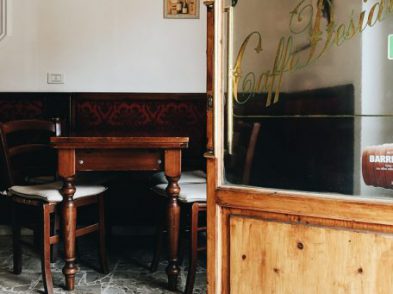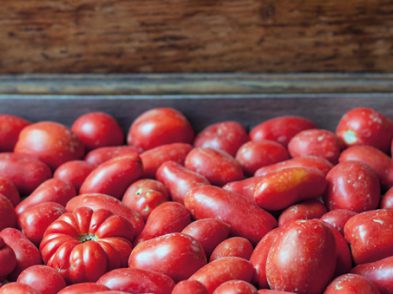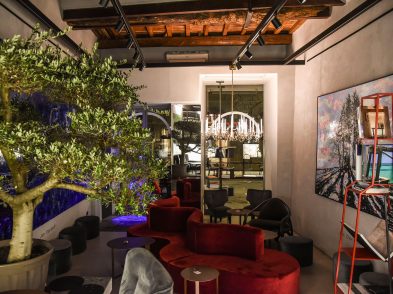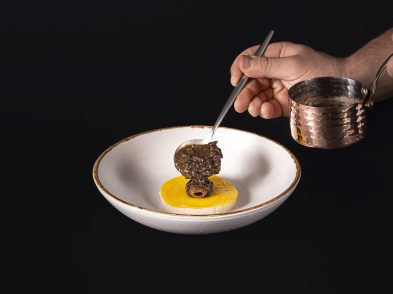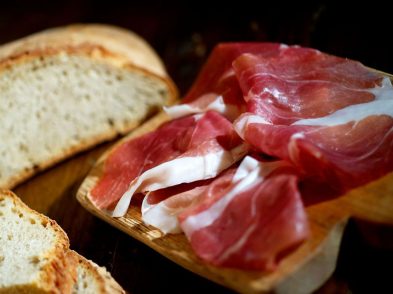A favourite Italian holiday destination, the island of
Elba, the largest in the Tuscan archipelago, is best known for its beaches and
crystalline water than for its food. That may be because the traditional
cuisine of this island is a humble one that stems from cucina povera and
the rough life of fishermen and mariners.
With island cuisine,
not only is fish front and center on the menu, but it has taken different forms
as, over the centuries, through contact with different peoples and cultures,
the cuisine adopted new dishes. Dishes such as stockfish and baccal? were adopted from the Spanish. Other dishes were greatly influenced from the
kitchens of mainland Tuscany, Liguria, Provence and even pirates.
Yet even on an island rich in seafood, cucina
povera reigns. The waters of the Tuscan coast abound in pesci azzurri,
the Italian term for oily fish, which include the cheap and plentiful
shimmering-blue fish such as sardines, anchovies, mackerel and palamita (bonito). They are the favourite ingredients used in the traditional dishes of
the coastal towns of Tuscany and its islands, where they are simply grilled or
used in pasta dishes. Some fish specialities are more distinctive, such as palamita,
which is often boiled with bay leaf and preserved in jars of oil, much like the
more expensive tuna.
A specialty of Elba is polpo lesso, boiled
octopus, a simple, spartan dish. Granzeole or Granseole crabs, which are known
as margherite on Elba, make a delicious pasta dish and are luckily found
on the menu of practically every restaurant on the island.
One of the
island’s best known vegetarian recipes, gurguglione, also makes a
wonderful addition to a summer meal. Similar to a French ratatouille, it is
made by saut?ing potatoes, green peppers, eggplant, zucchini, onion and very
ripe tomatoes together until evenly cooked. Freshly torn basil finishes it off.
Thought to be adopted from Spanish pirates who once occupied some of Elba’s
coasts, gurguglione can be eaten hot or cold, as a side dish, main
course or even as an antipasto, as a topping to garlic-rubbed crostini.
All of this, of course, goes very well with a glass of
the island’s local wine, such as Ansonica, Vermentino and Elba Rosso. Perhaps
Elba’s most famous beverage is the sweet, red, dessert wine, Aleatico. Rumour
has it that the Aleatico grape, a small, deep-bluish coloured grape, originally
comes from an indigenous Greek vine and was planted on Elba, in Puglia and in
Lazio. Others believe it’s a native Italian grape, a genetic variation of red
moscato. During Napoleon’s exile on Elba Island, he is known to have said that
a glass of Aleatico was his only consolation. The syrupy wine has aromas of
cherries, violets and spice and is best drunk in a small glass after dinner,
preferably with a slice of Elba’s most famous dessert, schiaccia briaca or ?drunken cake’ (see recipe in TF 152).
While the coastal towns of the island specialised in
mastering seafood dishes, the towns high in the hills or inland offer baked
goods. Schiaccia briaca, was likely made originally without the alcohol.
Today’s key ingredient, Aleatico, is said to have been added in the 1800s. Made
without eggs or raising agents, this dried-fruit laden cake had a long shelf
life that suited the lifestyle of long-at-sea mariners. This, along with the
island’s other baked goods, make up a large part of Elba’s traditional cuisine,
which includes specialities like fig foccacce and sportella, a
sweet bread perfumed with aniseed, similar to the Easter bread made on the
Tuscan mainland near Pisa, and the stiacciata of the port of Livorno.
Take a bit of Elba home with you with this summery
vegetarian dish. As this is a humble, home-style dish, it can be made with the
amounts of vegetables you have on hand, but aside from the onion, there should
be more or less even amounts of each vegetable.
Gurguglione
Ingredients
2 green peppers, seeds removed
2 medium eggplants
2 small zucchini
2 potatoes, peeled
3 very ripe tomatoes
1 small red onion (or ? a large one)
Fresh basil
Olive oil
Salt and freshly ground pepper
Preparation
Chop the cleaned vegetables into even pieces. Gently
heat some olive oil in a pan that is large enough to hold all the vegetables
and begin cooking first the potatoes. Allow them to soften with the lid on, but
check them often and stir here and there to avoid any caramelisation. Then add,
in this order, the onions, the eggplant, the zucchini, the peppers, and finally
the tomatoes. Continue cooking over medium-high heat, stirring occasionally. If
needed, add some water and place the lid on, until the vegetables are cooked
evenly. Before serving, decorate with plenty of torn basil.
Use this as a side dish to meat or fish or for an easy
antipasto, or use a spoonful of gurguglione as topping on a
toasted baguette or Tuscan bread with a rub of raw garlic.

